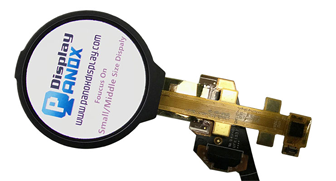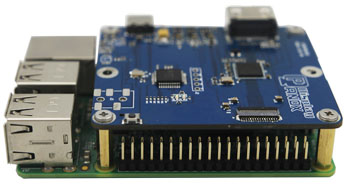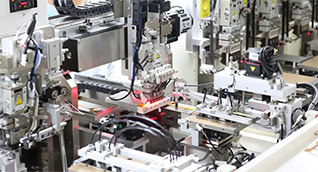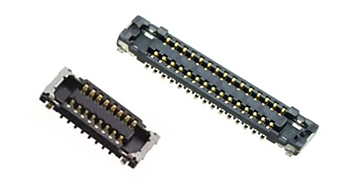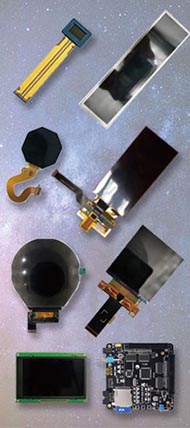Vertical-Cavity Surface-Emitting Lasers (VCSELs) offer numerous advantages including low power consumption, high modulation speeds, excellent beam quality, and cost-effective manufacturability. Their unique vertical emission and wafer-level testing enable scalable production of uniform laser arrays, making them ideal for applications in data communication, sensing, and consumer electronics.
What is a VCSEL laser and how does it differ from other lasers?
A VCSEL laser is a semiconductor laser diode that emits light vertically from the surface of the chip, unlike traditional edge-emitting lasers that emit light from the side. This vertical emission is achieved through a very short optical cavity formed by two distributed Bragg reflectors (DBRs) sandwiching an active quantum well region. The structure allows for circular beam profiles, low divergence, and efficient coupling into optical fibers. This fundamental difference enables unique performance and manufacturing benefits.
How does the vertical emission of VCSELs improve performance?
The vertical emission of VCSELs results in a circular, low-divergence beam that is easier to couple into fibers and optical systems compared to the elliptical beams of edge-emitters. This leads to:
-
Improved beam quality and uniformity.
-
Simplified optical alignment and packaging.
-
Enhanced efficiency in optical communication and sensing systems.
Additionally, the short cavity length enables high intrinsic modulation bandwidths, supporting rapid data transmission.
What are the manufacturing advantages of VCSEL lasers?
VCSELs can be tested and characterized at multiple stages during wafer fabrication, unlike edge-emitters which are tested only after full device processing. This wafer-level testing reduces waste and improves yield. Furthermore:
-
Tens of thousands of VCSELs can be fabricated simultaneously on a single wafer.
-
The vertical emission allows for dense two-dimensional arrays.
-
Manufacturing processes are more predictable and scalable.
-
Integration with existing silicon-based heat sinking and packaging technologies reduces costs.
Panox Display leverages these manufacturing advantages to deliver high-quality, cost-effective VCSEL-based solutions.
Which applications benefit most from VCSEL technology?
VCSELs are widely used in:
-
Data Communication: High-speed optical interconnects in data centers.
-
3D Sensing and Imaging: Facial recognition, gesture control, and LiDAR.
-
Consumer Electronics: Laser mice, printers, and smart glasses.
-
Industrial Automation: Precision sensing and measurement.
-
Automotive: Advanced driver-assistance systems (ADAS) and LiDAR.
Their compact size, low power consumption, and high modulation speeds make them ideal for these diverse applications.
Why is energy efficiency a key advantage of VCSELs?
VCSELs operate at low threshold currents due to their small active region, resulting in significantly lower power consumption compared to edge-emitters. This efficiency is critical for battery-powered and portable devices, as well as for reducing operational costs in large-scale data centers. Low power operation also reduces heat generation, simplifying thermal management.
How does wavelength stability and uniformity enhance VCSEL performance?
VCSELs exhibit stable wavelength emission due to their short Fabry-Perot cavity and monolithic design. Modern fabrication techniques ensure wavelength uniformity across entire wafers, with standard deviations often less than 2 nm. This consistency is essential for applications requiring multiple VCSELs operating in unison, such as 2-D arrays in sensing and communication systems.
Can VCSELs be produced in arrays, and what advantages does this offer?
Yes, VCSELs can be fabricated in dense two-dimensional arrays on a single wafer. This provides:
-
High total output power by combining multiple emitters.
-
Compact form factors for integration into small devices.
-
Simplified system design with fewer discrete components.
-
Cost savings from batch processing and packaging.
Such arrays are critical for applications like LiDAR and high-bandwidth optical links.
How does Panox Display utilize VCSEL technology in their products?
Panox Display incorporates VCSEL technology in custom OEM solutions, combining it with OLED and LCD displays for advanced sensing and communication products. Their expertise includes:
-
Providing flexible order quantities to support startups and SMEs.
-
Ensuring high-quality VCSEL arrays sourced from top manufacturers.
-
Offering engineering support for seamless integration.
-
Delivering cost-effective, scalable solutions tailored to client needs.
This makes Panox Display a trusted partner for businesses adopting VCSEL technology.
What challenges do VCSELs face and how are they addressed?
While VCSELs have many advantages, challenges include:
-
Limited single-emitter output power compared to edge-emitters.
-
Difficulty scaling to longer wavelengths beyond 1300 nm.
-
Managing thermal effects in high-power arrays.
Advances in design, materials, and packaging continue to mitigate these issues, with companies like Panox Display driving innovation to expand VCSEL capabilities.
Panox Display Expert Views
“VCSEL technology is revolutionizing optical systems with its unique combination of efficiency, scalability, and beam quality. At Panox Display, we harness these advantages to deliver cutting-edge display and sensing solutions. Our ability to provide custom VCSEL arrays alongside OLED and LCD modules empowers clients to innovate rapidly and cost-effectively in competitive markets.”
— Panox Display Technical Team
Conclusion
VCSEL lasers offer compelling advantages including low power consumption, high-speed modulation, excellent beam quality, and scalable manufacturing. Their vertical emission and wafer-level testability enable cost-effective production of uniform arrays, fueling innovations in data communication, sensing, and consumer electronics. Panox Display’s expertise in VCSEL integration ensures clients gain reliable, high-performance solutions. Embracing VCSEL technology is a strategic choice for future-ready optical systems.
FAQs
What makes VCSELs more energy-efficient than edge-emitting lasers?
Their small active region and low threshold current reduce power consumption significantly.
Can VCSELs be used in high-speed data communication?
Yes, VCSELs support high intrinsic modulation speeds suitable for multi-gigabit optical links.
Are VCSELs suitable for small-scale manufacturing?
Panox Display offers flexible order sizes, making VCSEL technology accessible to startups and SMEs.
How do VCSEL arrays improve system performance?
Arrays increase total output power and enable compact, integrated designs with uniform beam quality.
What industries benefit most from VCSEL technology?
Telecommunications, consumer electronics, automotive sensing, industrial automation, and medical devices.











